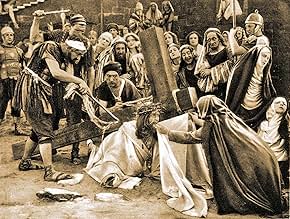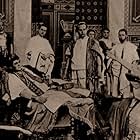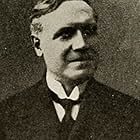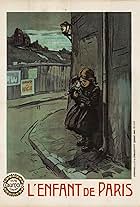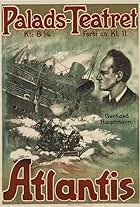An epic Italian film, "Quo Vadis" influenced many of the later movies.An epic Italian film, "Quo Vadis" influenced many of the later movies.An epic Italian film, "Quo Vadis" influenced many of the later movies.
Violet Radcliffe
- Nero's Baby
- (uncredited)
- Director
- Writers
- All cast & crew
- Production, box office & more at IMDbPro
Storyline
Did you know
- TriviaOne of the first two-hour films ever made.
- ConnectionsEdited into The Sign of the Cross (1914)
Featured review
At the dawn of the cinema, it was Italy where actually great spectacles were born. They had the locations at hand. Along the famous CABIRIA made a few years later (which also celebrated its centenary), QUO VADIS by Enrico Guazzoni based faithfully upon Henryk Sienkiewicz's novel, not only stunned the audience of the time being played in many road theaters but also set the standards for the very genre (as many reviewers have stated before me). More to say, Sienkiewicz's novel became one of the top literary sources which inspired so many filmmakers to bring the first century Rome, the decadence and fall of emperor Nero (reigning 54-68 A.D) and the rise of Christianity in the center of the empire to screen. The most famous version enjoying the international renown to this day is, of course, Mervyn LeRoy's (1951). However, great as the ultra popular QUO VADIS is, this one appears to be more faithful to the novel but requires a very special perception. Allegedly, Henryk Sienkiewicz himself saw this motion picture which we can see now after the restoration co-financed by the Lumiere Project.
Amleto Novelli, Carlo Cattaneo, Cesare Moltini, Lea Giunchi, Gustavo Serena...the cast of the time do not make any special impression on us these days. Similarly to stagy silent movies of the 1910s, they may appear as 'phantoms' moving within the frame of the screen without desirable close-ups that would instill some understanding of the characters' feelings. Yet, that is not the strength of the movie.
The major phenomenon of this silent QUO VADIS (there was another silent version with Emil Jannings as Nero which occurred a flop) are the moments of great aesthetic intensity. Mostly operatic in its feeling, it supplies a viewer with an unbelievable 'image' of the novel's content. It is not the novel so to say 'filmed' or pictured but art of a new medium (at the time) which beautifully combines literature and cinema. With no words necessary, the movie does not disturb imagination but rather inspires its unknown spheres. From the banquet at Nero's through the fire of Rome, the shots of the arena and St Peter meeting Christ on the Appian Way (the climax of the story here though not so historically chronological), the scenes may still occur highly entertaining.
We watch a distant past, we have a glimpse of early cinema's vision and both the storytelling and the execution of the content become to us quite 'archaic.' That aspect appears as tremendously involving.
There is not much to say about performances, about music score, about special effects. Yet, there is something inspiring about depriving oneself of all the prefabricated expectations of an 'entertaining' movie, about beating the 'cliches' of 'silent film equals to boring film' and allowing oneself to view it in a fresh manner as if it still had something to offer after more than a century. And believe me, it does.
Amleto Novelli, Carlo Cattaneo, Cesare Moltini, Lea Giunchi, Gustavo Serena...the cast of the time do not make any special impression on us these days. Similarly to stagy silent movies of the 1910s, they may appear as 'phantoms' moving within the frame of the screen without desirable close-ups that would instill some understanding of the characters' feelings. Yet, that is not the strength of the movie.
The major phenomenon of this silent QUO VADIS (there was another silent version with Emil Jannings as Nero which occurred a flop) are the moments of great aesthetic intensity. Mostly operatic in its feeling, it supplies a viewer with an unbelievable 'image' of the novel's content. It is not the novel so to say 'filmed' or pictured but art of a new medium (at the time) which beautifully combines literature and cinema. With no words necessary, the movie does not disturb imagination but rather inspires its unknown spheres. From the banquet at Nero's through the fire of Rome, the shots of the arena and St Peter meeting Christ on the Appian Way (the climax of the story here though not so historically chronological), the scenes may still occur highly entertaining.
We watch a distant past, we have a glimpse of early cinema's vision and both the storytelling and the execution of the content become to us quite 'archaic.' That aspect appears as tremendously involving.
There is not much to say about performances, about music score, about special effects. Yet, there is something inspiring about depriving oneself of all the prefabricated expectations of an 'entertaining' movie, about beating the 'cliches' of 'silent film equals to boring film' and allowing oneself to view it in a fresh manner as if it still had something to offer after more than a century. And believe me, it does.
- marcin_kukuczka
- Aug 1, 2015
- Permalink
- How long is Quo Vadis??Powered by Alexa
Details
- Release date
- Country of origin
- Languages
- Also known as
- Камо грядеши?
- Production company
- See more company credits at IMDbPro
Box office
- Budget
- ITL 45,000 (estimated)
- Runtime2 hours
- Color
- Sound mix
- Aspect ratio
- 1.33 : 1
Contribute to this page
Suggest an edit or add missing content








